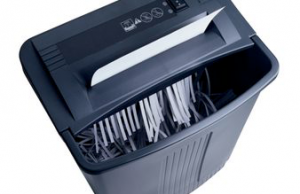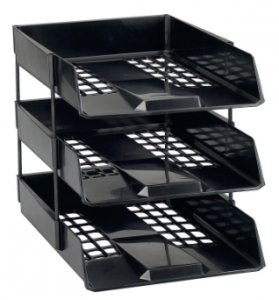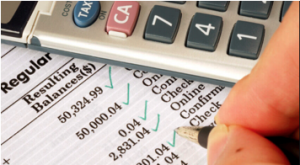Betalningsmetoder att använda på utländska casinon för smidig spelupplevelse

Att utforska alternativ för överföringar till internationella underhållningssidor har blivit allt mer populärt bland spelentusiaster. Det handlar inte bara om att hitta en trygg väg för insättningar och uttag, utan också om att säkerställa snabbhet och bekvämlighet i processen. Med en variation av tekniska lösningar tillgängliga, är det viktigt att känna till vilka alternativ som är mest fördelaktiga.
Bland de mest populära valen återfinns e-plånböcker, som erbjuder en smidig och omedelbar metod för finansiella transaktioner. Dessa elektroniska plånböcker gör det möjligt att hantera pengar med lätthet, vilket har blivit ett önskvärt alternativ för många användare. Men även kryptovaluta har vunnit terräng, och erbjuder en modern och anonym approach för de som önskar en diskret upplevelse.
Med så många alternativ på marknaden är det avgörande att förstå funktionaliteterna hos olika betalningslösningar. Att jämföra hastighet, säkerhet och användarvänlighet kan göra stor skillnad och hjälpa till att optimera spelupplevelsen. Genom att känna till de mest effektiva metoderna kan man maximera glädjen av att delta i internationella spelaktiviteter.
Betalningsmetoder du kan använda på utländska casinon

Det finns olika alternativ för överföringar i spelmiljöer utanför Sverige. Många spelare föredrar kryptovaluta på grund av dess anonymitet och snabbhet. Transaktionerna går snabbt och säkerheten är hög, vilket gör det till ett populärt val bland användare.
E-plånböcker är också en vanlig metod för insättning och uttag. Tjänster som Skrill och Neteller erbjuder smidiga lösningar för att hantera pengar, där överföringarna ofta går direkt. Detta gör att spelare kan fokusera mer på spelen och mindre på betalningsprocesser.
Oavsett valet av metod är det viktigt att tänka på avgifter och behandlingstider. Kryptovaluta har ofta lägre kostnader jämfört med traditionella sätt, medan e-plånböcker erbjuder snabbhet och användarvänlighet. Båda alternativen får definitivt spelare att uppleva en smärtfri transaktionsprocess.
Kredit- och betalkort: Fördelar och nackdelar
Kredit- och betalkort är bland de mest populära sätten för insättningar på internationella spelsajter. Deras användning erbjuder en rad fördelar, men det finns även nackdelar som spelares medvetenhet behövs.
Fördelar:
- Snabbhet: Transaktionerna genomförs omedelbart, vilket gör att spelare snabbt kan börja spela.
- Bekvämlighet: Många har redan ett kredit- eller bankkort, vilket förenklar processen för insättningar.
- Säkerhet: De flesta kortutgivare erbjuder skydd mot bedrägerier, vilket ger en känsla av trygghet vid online-transaktioner.
- Bonusar: Vissa spelsajter erbjuder specialsatsningar eller bonusar för insättningar med kort.
Nackdelar:
- Avgifter: Vissa kortföretag eller spelsajter kan ta ut avgifter för transaktioner, vilket minskar det belopp som kan spelas med.
- Kryptovaluta: Med växande popularitet av kryptovaluta har vissa spelare börjat föredra dessa alternativ för anonymitet och lägre avgifter.
- Överdriven användning: Användning av kreditkort kan leda till oplanerade utgifter och skuldsättning för vissa spelare.
- Insättningar och uttag: Vissa kreditkort tillåter inte uttag, vilket kan vara frustrerande nog för dem som föredrar direktkonton.
Sammanfattningsvis kan kredit- och betalkort vara en bra lösning för insättningar, men det är viktigt att vara medveten om eventuella avgifter och risker kopplade till överdriven användning.
Elektroniska plånböcker: Snabba och säkra transaktioner
Elektroniska plånböcker är en populär lösning för insättningar och uttag på internationella spelsajter. Dessa tjänster erbjuder användare en möjlighet att hantera sina pengar med enkelhet och säkerhet.
Med e-plånböcker som PayPal, Neteller och Skrill kan spelare snabbt och effektivt överföra medel. De är kända för sina snabba transaktioner, vilket minskar väntetiden för både insättningar och uttag. Dessutom erbjuder många av dessa plånböcker möjligheten att knyta sitt konto till kryptovaluta, vilket ger ytterligare säkerhet och anonymitet vid transaktioner.
Ett av de mest tilltalande aspekterna av elektroniska plånböcker är deras höga säkerhetsnivå. Genom att använda avancerad kryptering skyddas användarnas personuppgifter och finansiella data, vilket gör dem till ett tryggt alternativ när det gäller online-transaktioner.
För dem som är intresserade av att utforska mer om säkra betalningsalternativ kan en detaljerad genomgång hittas på https://utländskacasinomedbankid.se/.
Sammanfattningsvis, med snabbhet, säkerhet och flexibilitet, är elektroniska plånböcker ett utmärkt val för spelare som vill få ut det mesta av sina transaktioner.
Kryptovalutor: En ny era av anonymitet och hastighet

Kryptovalutor erbjuder en unik lösning för spelare som värdesätter både anonymitet och snabbhet när det kommer till transaktioner. Genom att använda dessa digitala valutor, kan spelare genomföra insättningar och uttag på ett säkert sätt, utan att avslöja personlig information.
Med kryptovalutor blir behandlingstiderna för uttag betydligt kortare, vilket ger en mer sömlös spelupplevelse. Istället för att vänta flera dagar på att få sina vinster, kan spelare ofta se pengarna på sina e-plånböcker inom några minuter. Denna snabbhet gör kryptovalutor till ett attraktivt alternativ för många.
En annan fördel är den ökade säkerheten som följer med kryptovalutor. Transaktioner är decentraliserade och krypterade, vilket skyddar dem från bedrägerier och obehörig åtkomst. Att spela med kryptovaluta ger därmed en känsla av trygghet för användare i en digital miljö.
Det är också värt att nämna att kryptovalutor inte är bundna till traditionella bankregler, vilket gör dem särskilt intressanta för spelare i länder med stränga banklagar. Denna flexibilitet öppnar upp nya möjligheter för dem som är intresserade av online-spel och vill undvika de begränsningar som kan förekomma med andra betalningsmetoder.
Banköverföringar: Traditionell men pålitlig metod

Banköverföringar är en gammal men stabil väg för att göra insättningar och uttag. Många spelare föredrar denna metod tack vare dess pålitlighet och säkerhet. När du väljer att överföra pengar via din bank får du en garanti för att dina medel hanteras på ett ansvarsfullt sätt.
Även om snabbheten vid överföringar inte alltid är i nivå med e-plånböcker eller kryptovalutor, erbjuder banköverföringar en trygg lösning, särskilt för den som föredrar att ha kontroll över sina transaktioner. Insättningar går oftast igenom snabbt, men uttag kan ibland ta lite längre tid beroende på bankens rutiner.
En viktig aspekt av banköverföringar är den trygghet och förtroende som ofta kopplas til metoden. För den som är osäker på mer moderna alternativ, såsom kryptovaluta, kan det vara ett smart val att stanna kvar vid den traditionella vägen tills man känner sig bekvämare med andra alternativ.
Frågor och svar:
Vilka betalningsmetoder används oftast på utländska casinon?
På utländska casinon finns det flera betalningsmetoder som spelare ofta väljer. Några av de vanligaste är kredit- och betalkort som Visa och Mastercard, samt digitala plånböcker som Skrill och Neteller. Andra populära alternativ inkluderar banköverföringar och kryptovalutor som Bitcoin, som erbjuder snabba och säkra transaktioner. Valet av betalningsmetod kan påverkas av olika faktorer, inklusive hastigheten på insättningar och uttag, samt eventuella avgifter kopplade till varje alternativ.
Är det någon skillnad på insättningar och uttag när man spelar på utländska casinon?
Ja, det finns ofta skillnader mellan insättningar och uttag på utländska casinon. Vanligtvis går insättningar genom omedelbart, vilket innebär att spelare kan börja spela direkt efter att de har gjort en insättning. Uttag kan däremot ta längre tid beroende på vilken metod som används. Många digitala plånböcker kan ge snabbare uttag, medan banköverföringar ibland kan ta flera dagar. Casinot kan också ha olika villkor för uttag, inklusive verifiering av kontot innan pengarna kan tas ut.
Är det säkert att använda kreditkort på utländska casinon?
Att använda kreditkort på utländska casinon betraktas generellt som säkert, så länge casinot är licensierat och reglerat. Många casinon använder krypteringsteknik för att skydda spelarnas betalningsinformation. Det är ändå viktigt att kontrollera att casinot har en god rykte och väljer ett kortföretag som erbjuder bra säkerhetsfunktioner. Det kan också vara bra att hålla koll på sin kontohälsa och vara medveten om eventuella avgifter som kan tillkomma vid användning av kreditkort.
Vilka avgifter kan förekomma vid användning av olika betalningsmetoder?
Avgifter vid betalningar på utländska casinon kan variera beroende på vilken betalningsmetod man använder. Till exempel kan kreditkort och banköverföringar ha avgifter som casinot eller banken debiterar. Digitala plånböcker kan också ta ut en liten procentsats eller en fast avgift för varje transaktion. Det är viktigt att läsa casinots villkor och avgiftspolicy innan man väljer en betalningsmetod för att undvika överraskningar när man gör insättningar eller uttag.
Kan man använda kryptovalutor som betalningsmetod på utländska casinon?
Ja, många utländska casinon accepterar kryptovalutor som betalningsmetod. Bitcoin är den mest populära, men vissa casinon erbjuder även andra kryptovalutor såsom Ethereum och Litecoin. Användning av kryptovalutor kan ge snabba insättningar och uttag, samt en högre grad av anonymitet. Det är dock viktigt att kontrollera att casinot verkligen stöder kryptovalutor och att förstå eventuella risker och avgifter kopplade till deras användning.
Vilka betalningsmetoder är mest populära på utländska casinon?
De mest populära betalningsmetoderna på utländska casinon inkluderar kredit- och debetkort som Visa och MasterCard, e-plånböcker som Skrill och Neteller, samt kryptovalutor som Bitcoin. Dessa metoder erbjuder olika fördelar, som snabbhet och säkerhet, vilket gör dem till föredragna val för spelare. Många casinon erbjuder också banköverföringar och betalningstjänster som Paysafecard, vilket ger spelarna goda alternativ beroende på deras behov och preferenser.
Hur säkra är betalningsmetoder på utländska casinon?
Generellt sett är betalningsmetoder på utländska casinon ganska säkra, särskilt om casinot har en licens och följer strikta regler för spel och betalningar. Många casinon använder avancerad krypteringsteknik för att skydda transaktioner och personlig information. Det är dock viktigt för spelare att göra sin research. Att använda välkända betalningstjänster som e-plånböcker eller kreditkort kan även öka skyddet. Dessutom bör spelare alltid kontrollera casinoets säkerhetsprotokoll och läsa recensioner innan de gör insättningar.






